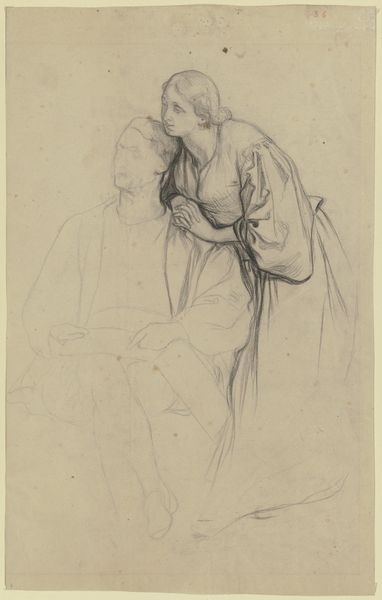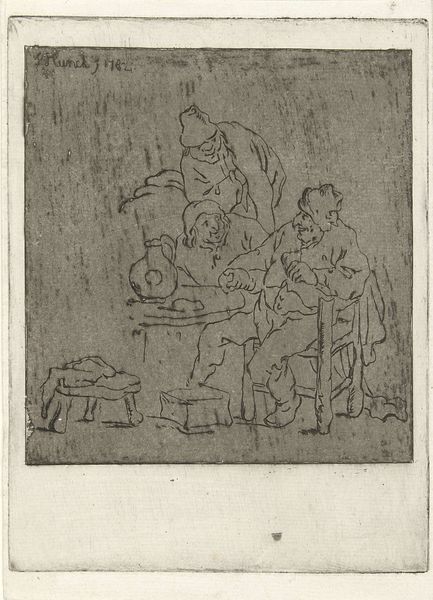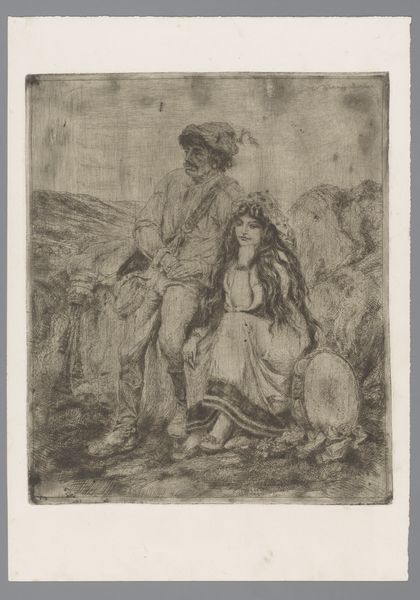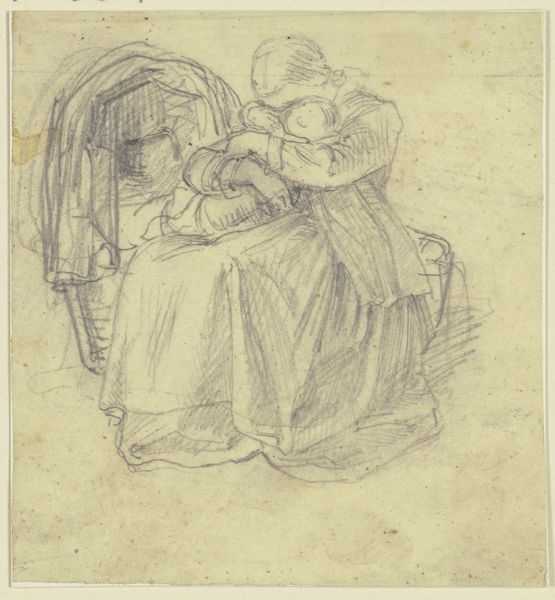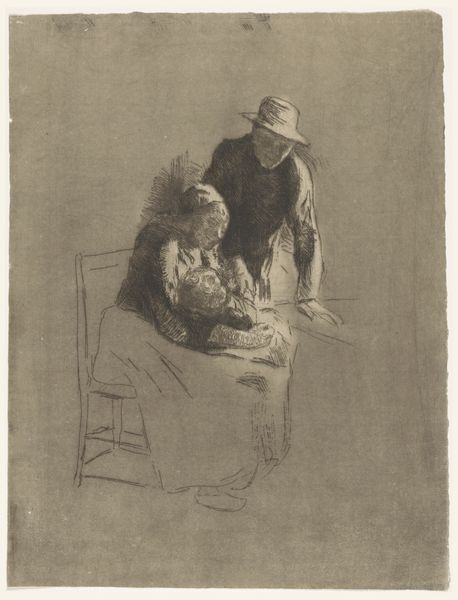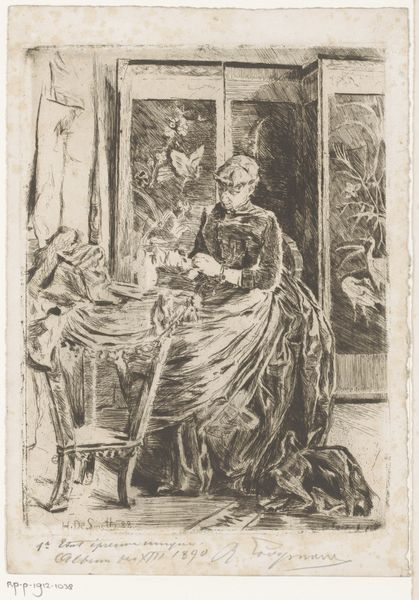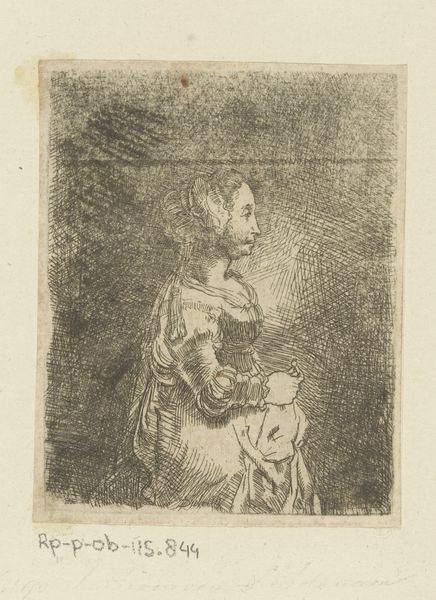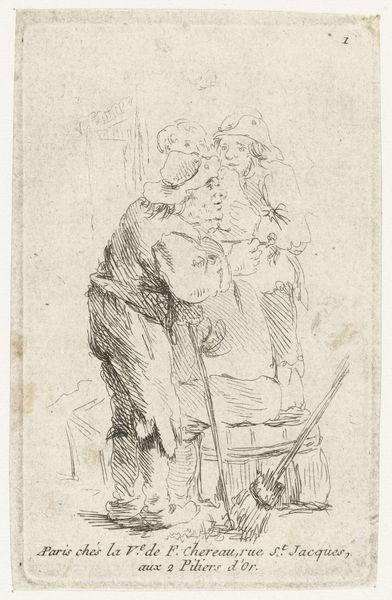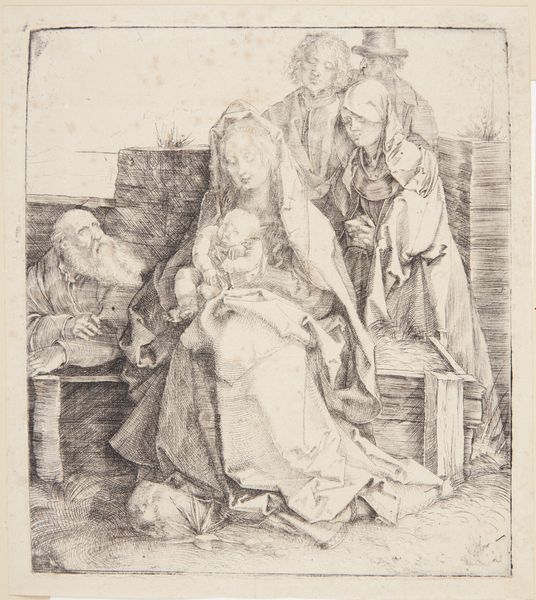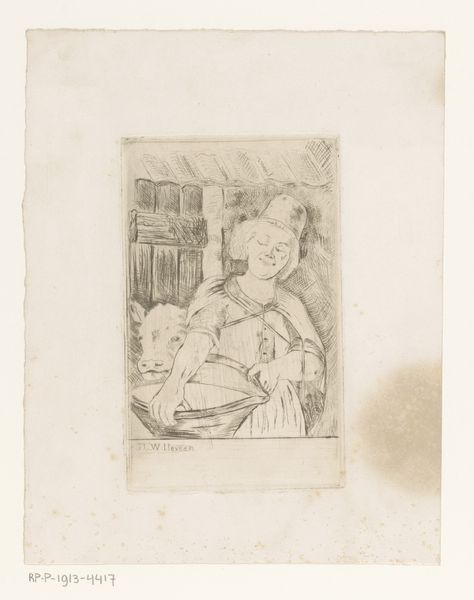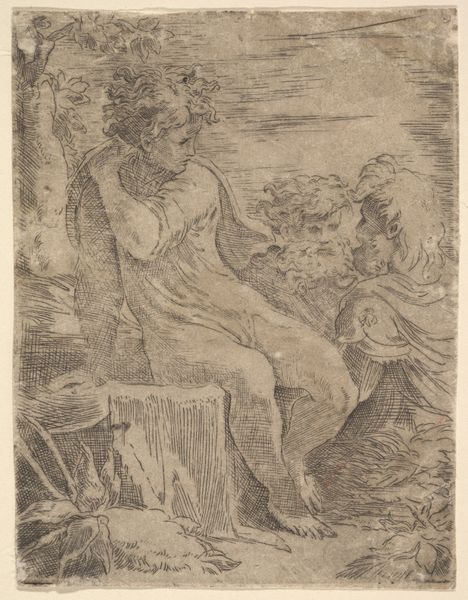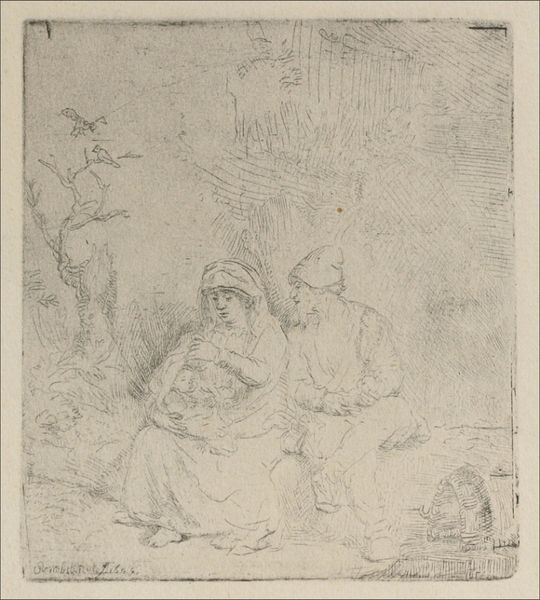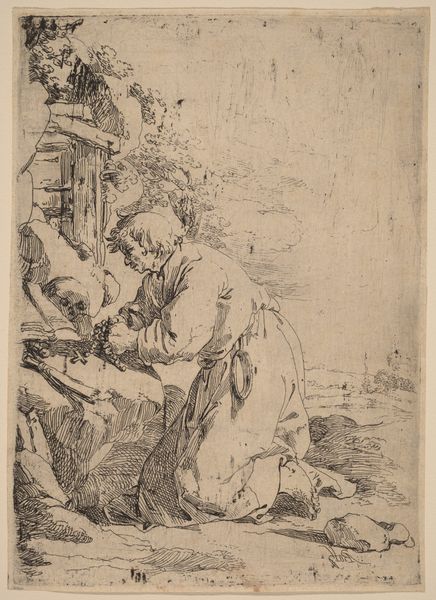
print, drypoint
#
portrait
# print
#
figuration
#
history-painting
#
drypoint
#
northern-renaissance
Dimensions: 8 3/8 x 7 3/8 in. (21.27 x 18.73 cm) (plate)
Copyright: Public Domain
Albrecht Dürer created this etching of the Holy Family sometime in the late fifteenth or early sixteenth century. The scene depicts Mary, Jesus, and Joseph alongside other figures, all of whom are part of the extended family of Jesus. As a leading artist of the Northern Renaissance, Dürer straddled the medieval and modern worlds, grappling with the growing humanist interest in the individual. While religious subjects remained central, the period saw an increasing focus on the real lives of biblical figures, their emotions, and relationships. Consider how Dürer humanizes the Holy Family, portraying them not in idealized splendor, but within an intimate, domestic setting. This shift reflects a broader cultural movement toward personal piety and the nuclear family that was emerging at the time. Dürer's masterful technique enhances the work's emotional depth, conveying a sense of quiet contemplation. Yet, despite this domestic intimacy, the figures and their relationships remain somewhat reserved. What do you make of this tension between private devotion and public presentation, and how might it reflect the societal expectations placed on families during the Reformation?
Comments
No comments
Be the first to comment and join the conversation on the ultimate creative platform.
